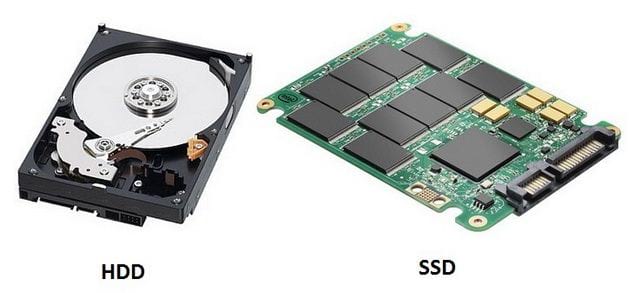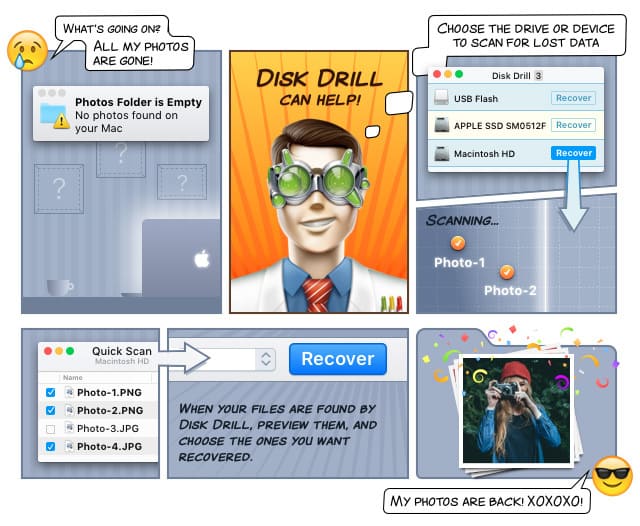What is a Solid State Drive and is Data Recovery Possible?
Let’s begin by understanding what is a solid state drive and what does your computer have to do it. SSD, or a solid state drive, as it’s commonly referred to, is pretty different to your regular HDD (hard disk drive). So, unlike a regular spindled HDD, the SSD has absolutely no mechanical parts. The hard disk drive as you know it has a spinning disk which has a read and write head attached to a mechanical arm which is known as the actuator. The SSD, on the other hand, has a semiconductor memory which is is neatly organized as a disk drive using nothing than integrated circuits instead of optical or magnetic storage media.

In order to fully contemplate at what is a solid solid state hard drive, you might be interested in seeing what is a solid state drive used for. So, with this in mind, it’s worth mentioning that the use and adaptation of SSDs has been particularly driven by the growing usage of applications which are demanding a lot of I/O performance. The truth is that SSDs have a considerably lower random access as well as read access latency than the regular hard disk drives which make them the perfect fit for both heavy read as well as random workloads.
In order to grasp at the full understanding behind what is a SSD drive, you might be interested in learning that the use of flash SSD to read directly and immediately information from a particular flash cell location is the reason for the considerably lower latency. The truth is that high-performance desktops, laptops and servers which are designated to report and deliver real-time information or information which is near real-tile could pretty much benefit of the usage of a solid state drive.

You might also be interested in the fact that the first SSD was thoroughly implemented by IBM back in the 1970s. They have been significantly improving the storage capacity of their productions which can now reach over 500 GB for regular home computers. Of course, the trend of decreasing costs per GB continues to be in full force. SSDs are the perfect solution for nettops, netbooks as well as other applications which wouldn’t usually require you to have several hundred gigabytes of storage space.
It’s also worth pointing out that SSDs might also be commonly referred to as flash drives. This is accurate but a lot of people tend to misunderstand the usage of the term. A flash drive is something that is completely different than a USB jump drive or Adobe Flash, for instance. It’s a type of storage compartment which reveals quite a few benefits. With this in mind, understanding what does a solid state drive do is going to provide you with the chance of determining whether you should opt for one or not.
What is more, information on SSD drives could get lost for a variety of reasons. It’s also important to know that in particular cases which are different than the destruction of the drive or failing to record the information on it in the first place, you might be able to restore the lost data. Disk Drill is one of the solutions that you might be looking for in a situation of the kind. Let’s take a look at how you can use this software in order to properly recover information from your SSD drive.

If you’ve lost your SSD data, that’s usually not a reason to panic because you might be able to easily recover your lost information with the usage of Disk Drill. All you need to know that if you are actually able to mount your disk to your Mac, for instance, your data could be recovered by the software on this particular media. Even when it comes to SSD disk formatting, you will still be able to get your information restored. Below, you will see how to do so.
Step #1. Download
The first thing that you need to do, which is also likely to be the most obvious one, is to download the application, deploy and run it on your computer.
Step #2. Find the SSD
Right after you’ve installed and launched the Disk Drill application, you will have to find the SSD drive in a splash screen which is going to pop right in front of you on your screen. The tool is comprehensive so you should have no troubles doing this.
Step #3. Pick up your Scanning mode
You are going to need to choose between a few different scanning modes. Disk Drill manages to deliver different solutions which are fit for various purposes. With this in mind, if you want to recover recently deleted files, you would be capable of using the Quick Scan method. However, if your target files aren’t available for preview in the results generated by the Quick Scan, you can go ahead and take advantage of the Deep Scan method. This one is going to perform a powerful background scan of your SSD and it’s capable of recovering files which were lost long time ago.
Step #4. Recovery
This is basically the last step of the recovery process. After you’ve generated the list you can use the Preview tool in order to take a look at all of the needed files. You can click on the Recover button on the side and you are basically it.
So, this is how seamless the process of data recovery really is. Regardless of whether you know what is a solid state drive or not, you’d be certainly capable of using the Disk Drill tool to recover lost information. What is more, you can also take advantage of the unique file protection features available in the software. The Recovery Vault is going to keep you safe and make sure that potential recovery processes are carried out much faster and easier. In any case, it’s safe to say that the entire recovery process wouldn’t be a burden.
